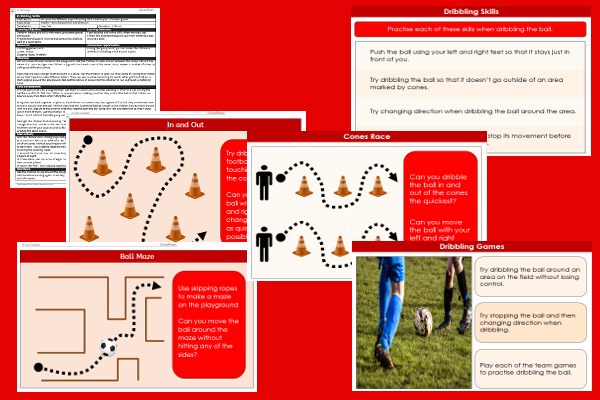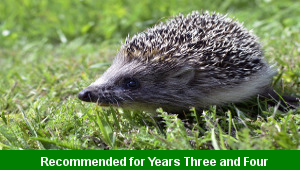Lesson Two – Dribbling Skills

This physical education teaching pack for Key Stage Two gets the children to identify and practise some of the different ways of moving with a ball around a football field when dribbling as part of a team game.
The class can perform actions and skills that can be used to maintain control of a football when moving around the pitch during the game to try and advance the ball towards the goal.
Download this teaching pack including a lesson plan, classroom activities and an interactive presentation to identify and practise some of the different ways of moving with a ball around a football field when dribbling as part of a team game
Activities in this teaching pack include a set of cards to develop and practise some of the skills that are needed when moving and controlling a football using dribbling with left and right feet to move the ball around the pitch and advance it towards the goal.
The interactive presentation can be used to explore and model different ways of moving with a ball when dribbling as part of a team game of football.
This lesson is part of a physical education scheme of work to get the children to practise, develop and model a range of different attacking, possession and defending skills when playing a small sided team game of football. There are teaching activities for shared learning, differentiated worksheets to support independent learning and interactive presentations to introduce concepts and key skills.
-

Rounding Hundreds
Explain and model how to round some different numbers to the nearest hundred based on the place values of the digits in each number
-

Rounding Tens
Identify and record how to round some different numbers to the nearest ten based on the place values of the digits in each number
-

Classic Animal Stories
Investigate the structure and content of classic works of fiction by significant authors with animals as the main characters
-

Cities, Towns and Villages
Research and present the history of a range of different buildings and people that are part of the local community using a school exhibition
